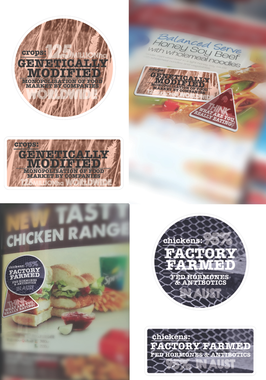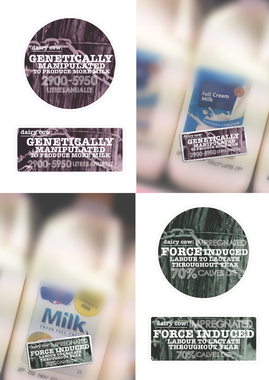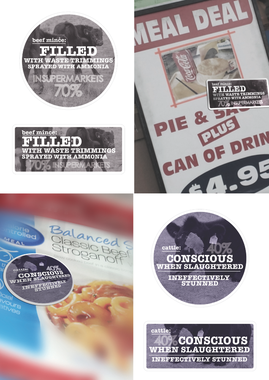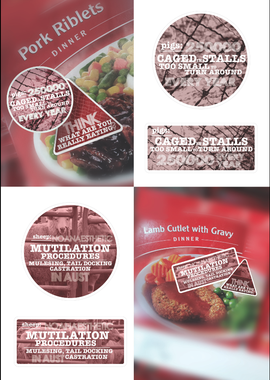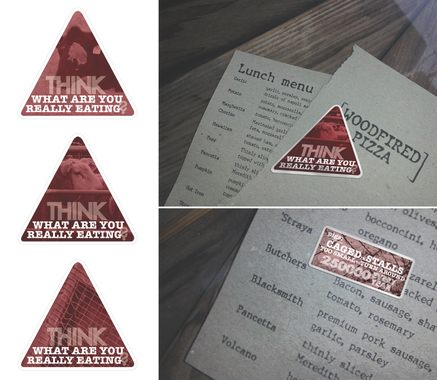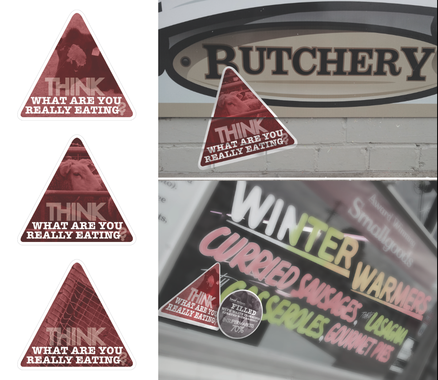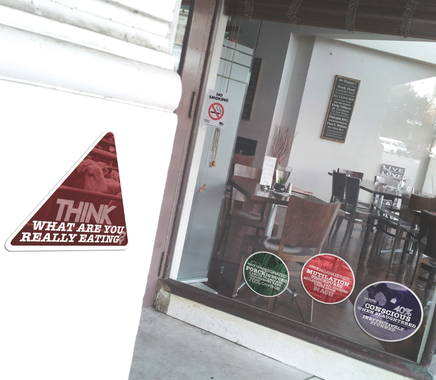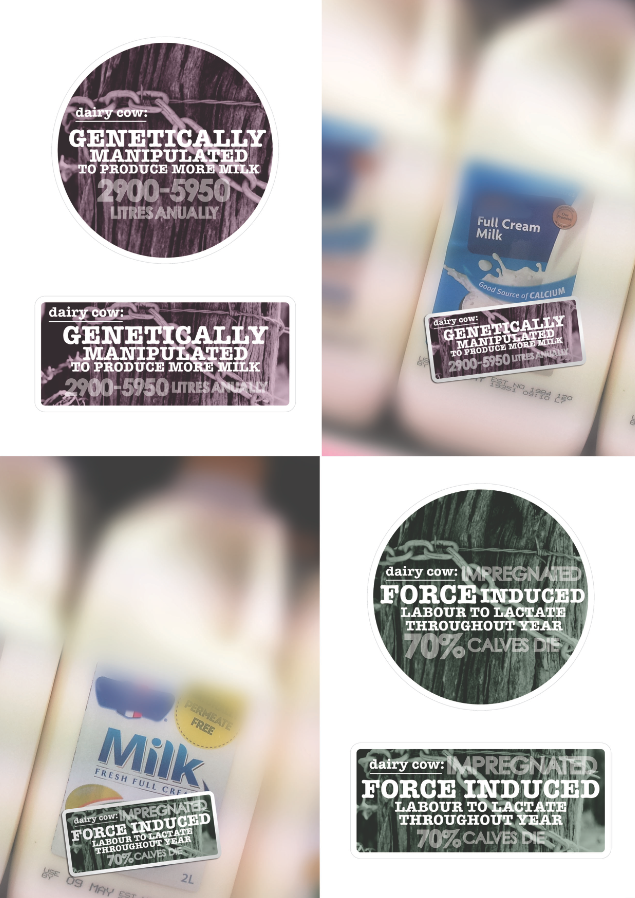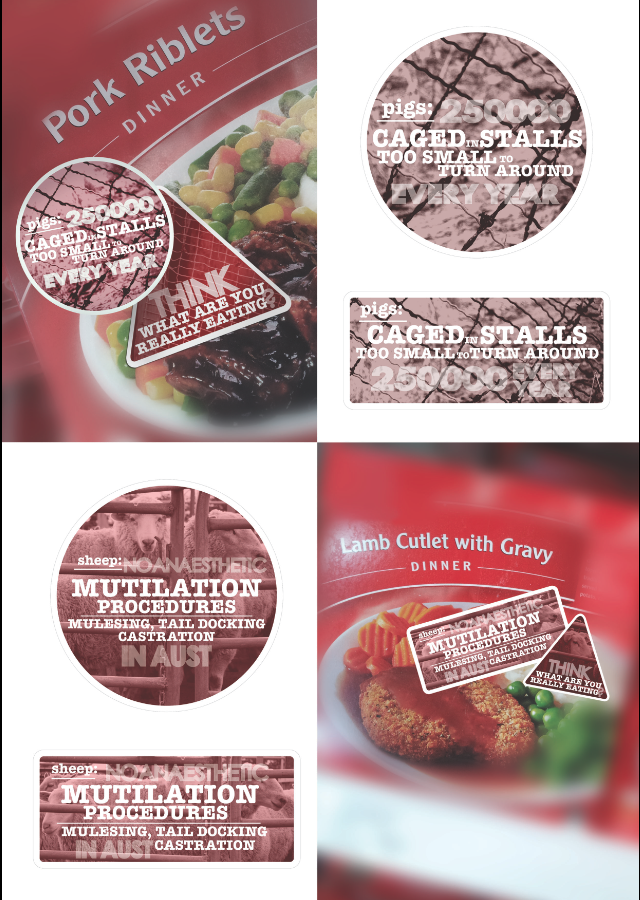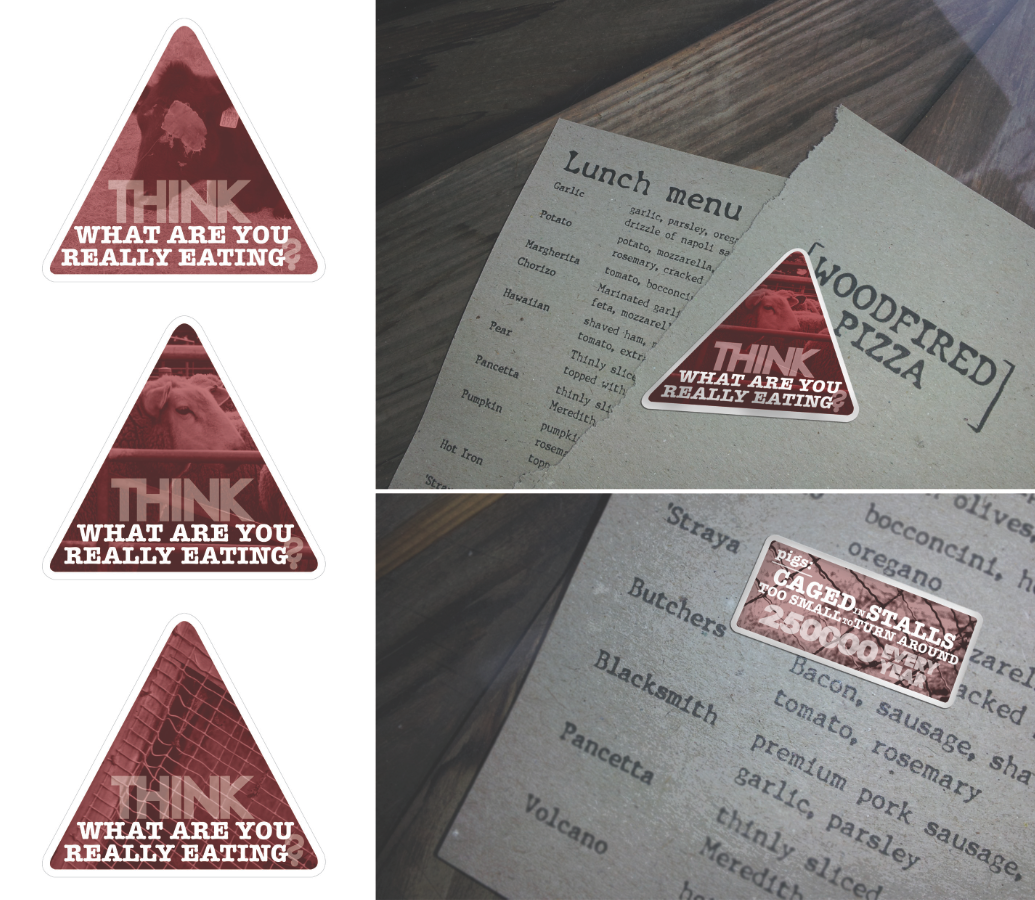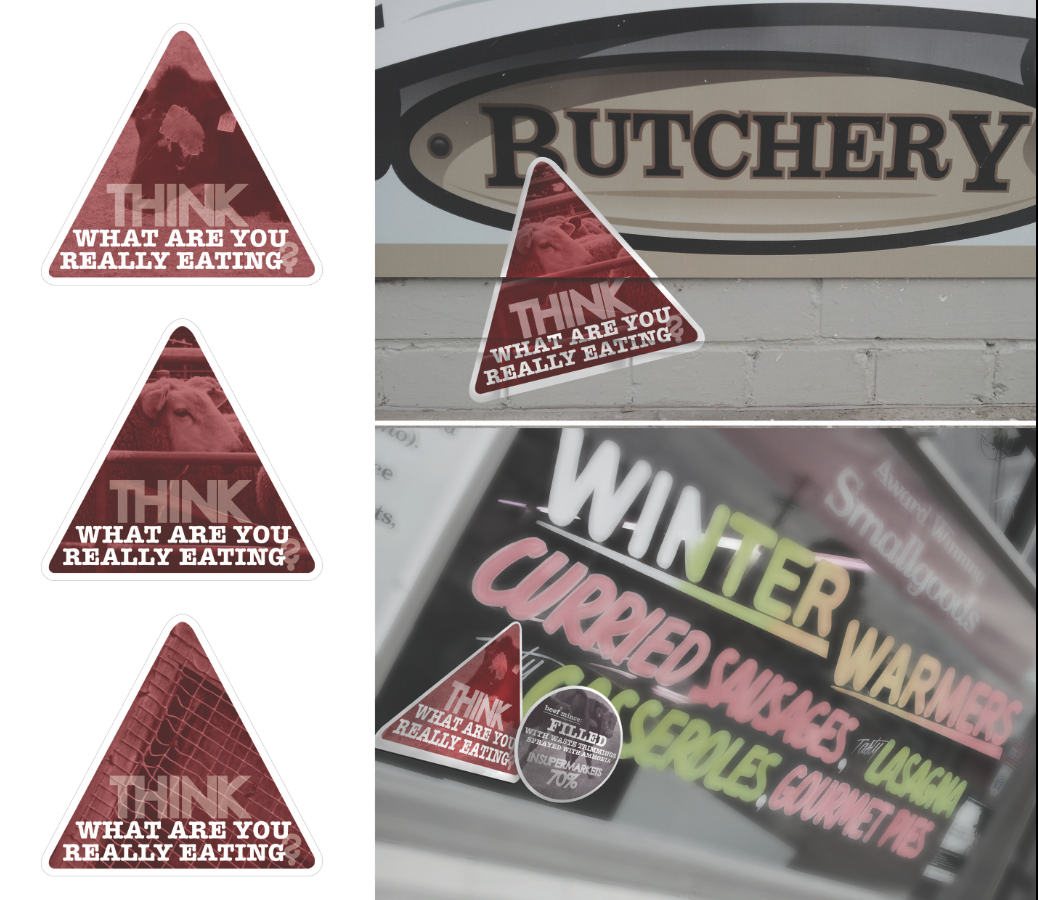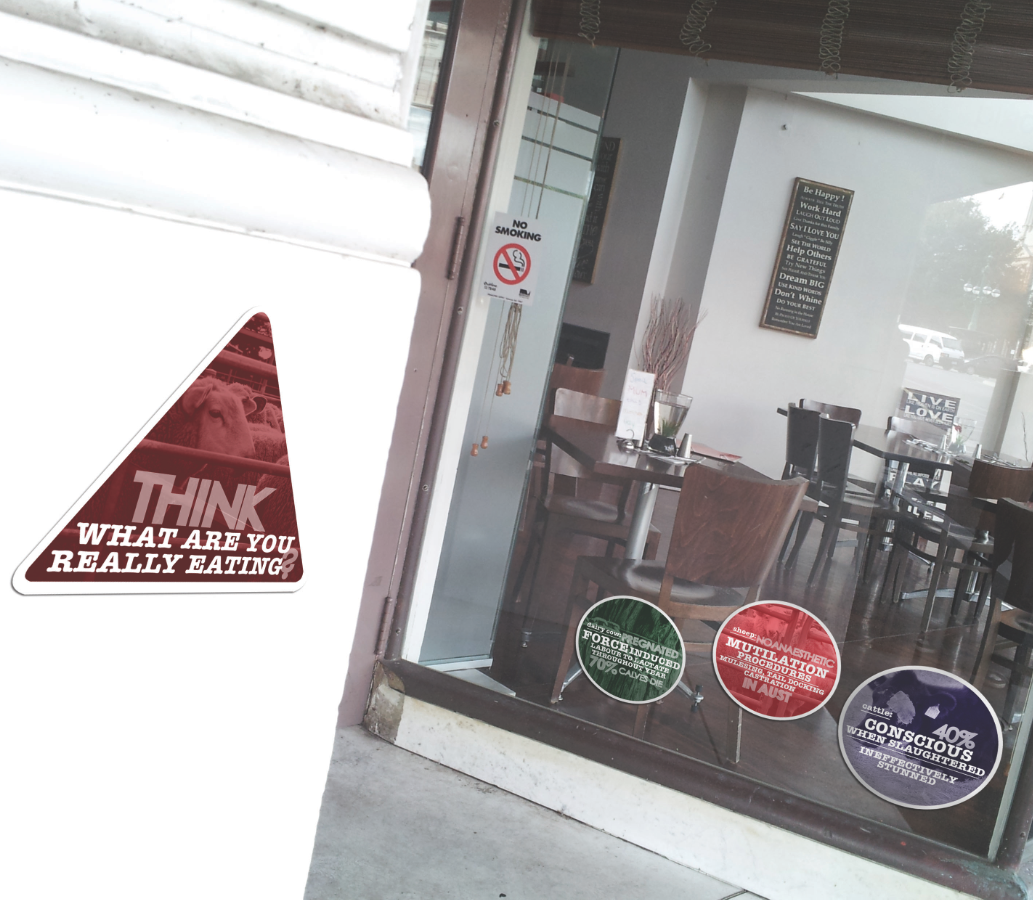Think! What are you really eating?
by jenmarlow92
Files
This work has not been commented by curators.
Title
Think! What are you really eating?
Headline
Food Stickers
Concept author(s)
Jennifer Marlow
Concept author year(s) of birth
1992
Concept author(s) contribution
I, Jennifer, started the design process by conducting research into the food industry and in particular, the truth behind factory farmed foods. I came up with initial sketches and ideas which were critiqued by my classmates and lectures at university. I then went out into my local area to take photos that related to the subject that I could later manipulate and use within my stickers. I felt the sticker application was the best format for the design communication as it is easy to reproduce and easy to apply, while being fun for anyone of any age to become an active part of.
Concept author(s) Country
Australia
Friendly Competition
Competition category
Visual communication practice
Competition subcategory
static
Competition field
academic
Competition subfield
student
Subfield description
University of Ballarat. School of Education and Arts. Bachelor of Visual Arts (Graphic Design Multi-Media)
Check out the Food Democracy 2013 outlines of Memefest Friendly competition.
Description of idea
Describe your idea and concept of your work in relation to the festival outlines:
Food production, distribution and consumption have become highly regulated and controlled by corporations, harming both the producer and consumer. In a world where the need for food increases due to population growth, more and more food is being genetically engineered and manipulated, and in case of our meat, factory farmed on mass. Factory farming of animals for meat poses threats to the animal’s welfare while it is alive, and consumers have the right to know what they are really buying and consuming, especially when labeling can be at best, vague. Some factory farming methods also involve genetically enhancing the animal or feeding them genetically modified grains or injecting them with genetic enhancing drugs. These stickers are designed to create awareness about the food people consume on an everyday basis, in particular the insight into factory farmed animals that a majority of processed, packaged and convenient foods would be getting their meat supply from as it is cheaper and more readily available. The stickers are intended to be placed on food items containing meat and will hopefully force consumers of these products to think about what they are really eating and be more inclined to change their habits. As they can be made at any size, they can be applied to any form of meat containing environment, and not restricted to one placement. For best results the circular and/or rectangular sticker designs should be placed next to a triangular "THINK" sticker, to connect the message back to the consumption of food.
What kind of communication approach do you use?
I used a graphic design communication approach to aesthetically position text, photograph and colour schemes to a sticker concept to create a visual that will be eye catching, bold, legible, simple and at the same time, slightly disturbing to a consumer who sees the sticker on the food products they are buying and eating. The text choice is purposefully bold and in capitals to demand a serious contemplation of the issue at hand. The different colours within the stickers make them fun to use in terms of anyone being able to place stickers within the food industry, and to be the first thing a consumer will notice on the food product. The imagery behind the text aims to show the disturbing visual truth behind the messages, linking it to a reality in the viewers mind.
What are in your opinion concrete benefits to the society because of your communication?
The concrete benefits to society through my sticker designs are to force people to seriously contemplate the food issues surrounding factory farmed meat. The percentage facts bring a disturbing truth to the viewer who will want to change the statistics by trying to find alternate meat food sources that are less harmful to the animal. As the designs are on stickers, anyone can both place and remove the stickers from products and locations, making them active participants in the mission. This should result in a person remembering the sticker content and being more inclined to do something about it, starting on a small and personal level. People can do this by conducting their own research, talking about the issues to friends and family and attempting to change food consumption patterns within their society.
What did you personally learn from creating your submitted work?
I personally learnt through the research and design process that the animals used to create the meat I consume on a regular basis, from supermarkets, restaurants and take-away, are more likely to have been subject to genetic engineering and harsh conditions then I previously thought. I was previously unaware how technology has allowed these animals to be enhanced, supposedly for a better quality food, but can actually pose more harm to a person consuming it. In the future, I will be making more of an effort to choose meat products that are more organically and humanely produced and telling the same thing to my friends and family.
Why is your work, GOOD communication WORK?
Think! stickers are good because they can be used in such a variety of situations anywhere, anytime, by anyone. They are simple in message so they can be easily understood, and the percentage facts are alarming to provoke a viewer to take action. The bright colours and sticker application make them easy for anyone to use and therefore, easier to spread throughout multiple societies, reaching as many people as possible in a short amount of time.
Where and how do you intent do implement your work?
The stickers are intended to be used by anyone and everyone, placed on any food related product or location. It can be put on foods in supermarkets, on cafe or restaurant fronts, on menus or drive thru menu boards, food and meat processing factories or advertisements. The stickers can be ripped off products or locations are re-used elsewhere, creating an active involvement with the public, and thus, creating more awareness within society. Also due to the non-permanent application as well as easy reproduction, the possibilities of the sticker placement is endless.
Did your intervention had an effect on other Media. If yes, describe the effect? (Has other media reported on it- how? Were you able to change other media with your work- how?)
The circular nature of the stickers mean they can be applied to other media as well, such as badges to be worn on the clothes of active participants, or as fridge magnets to stick to refrigerated shelving in supermarkets or take-away venues. The possibilities of these messages are endless and can be adapted by anyone. Hopefully not only do people become more aware of the issues surrounding the food industry, but to be motivated to create their own form of stickers with their own researched messages to spread throughout the community.

